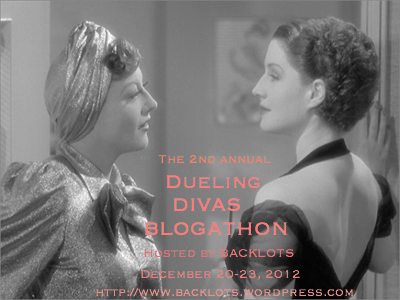
By Lara Gabrielle Fowler
The Hitchcock 9 got underway at the Castro Theatre last night with a screening of the silent version of Blackmail (1929). San Francisco Silent Film Festival artistic director Anita Monga spoke before the screening, mentioning that Blackmail is the last of Hitchcock’s films restored by the BFI for this event, made just before Hitchcock made the official transition into sound. In fact, Blackmail was actually shot twice–once as a sound film (sound was just beginning to become the default choice for filmmakers) and once as a silent, intended for theatres not yet equipped for sound. The sound version is relatively frequently seen, while the silent version screened for this event is quite rare and thus was a particularly special treat for filmgoers.
Alice White (Anny Ondra) is going out with Frank (John Longden), a Scotland Yard detective, but he seems more interested in his work than in spending time with his girlfriend. She confronts him about this at a tea house, and they have a fight during which Frank walks out in anger. To spite Frank, Alice invites a young painter named Mr. Crewe over to her table and leaves with him, walking right by Frank, who fumes. The two go back to Mr. Crewe’s apartment for what starts out as a harmless evening of painting. Alice notices a painting of a laughing clown that is a bit eerie, but she ignores it. Eventually Mr. Crewe asks Alice to pose in a ballerina costume for a painting. When Alice tries to change back into her clothes, Mr. Crewe steals them and attacks her in an attempted rape. As Mr. Crewe attacks her, Alice desperately tries to escape but when Mr. Crewe proves too strong for her, she reaches for a bread knife and stabs Mr. Crewe to death.
In this clip, pay special attention to Anny Ondra’s complete transformation from the beginning to the end. She morphs from a sweet, friendly girl to a woman almost possessed. You can see the murder in her eyes, but also intense fear and shock at what she has done. This clip demonstrates what a magnificent actress Anny Ondra was, and what a stellar performance she gave in this movie.
The morning after the murder, the whole neighborhood is talking about Crewe’s death and who might have committed such a horrible crime. Scotland Yard goes to the house to investigate, and coincidentally, it is Frank who is assigned to the case. He finds a glove in the house that he recognizes as Alice’s. When he sees the face of the dead man, he remembers Alice leaving with him and begins to put the pieces together. He confronts Alice at her father’s tobacco shop about what happened, when another man named Tracey approaches them and tries to blackmail them with the other glove, which he has in his possession. However, it turns out that Tracey himself has a criminal record, so Frank turns the blackmail around and turns Tracey in to Scotland Yard. Tracey flees and is pursued by Scotland Yard in the British Museum, where he falls through a glass panel to his death.

Tracey tries to escape down a rope in the British Museum.
Meanwhile, Alice is wracked with guilt about pinning the murder on someone who didn’t do it. She decides to turn herself in. But when she goes to see the Chief Inspector, he is distracted by a phone call and asks Frank to talk to Alice. The film ends as Mr. Crewe’s laughing clown painting is carried past them.
The image of the laughing clown painting was clear irony, providing a contrast to the murder. But I thought it was only that, until I researched the sound version. In the sound version, it is made clear that the model for the clown was in fact Tracey. This clears up some vagueness in the movie, because this silent version never explains where Tracey came from or how he knew Mr. Crewe. This gives an extra dimension to the reappearance of the clown, and ties up some loose ends that I noticed in the movie.
Despite this, I thoroughly enjoyed the movie. It is unmistakeably Hitchcock, and the chase through the British Museum reminded me more than a little of the chase through the Symphony Hall in The Man Who Knew Too Much (1954). Another interesting trivia bit about this movie is that there are no intertitles at all for the first 15 minutes of the movie. The action is conveyed completely through facial expressions, but there is no plot lost. The acting is so good that the audience is aware of exactly what is going on, without relying on the use of words.
Blackmail also includes what is thought to be Hitchcock’s longest cameo in any of his movies. He is onscreen for 20 seconds, shown being tormented by a small boy on a bus.

Hitchcock’s cameo
The festival continues today with Champagne at 1:00, Downhill at 4:00, The Ring at 7:00, and The Manxman at 9:30. See you there!



























_03.jpg)


This is one of my favorite Hitchcock films, though I’ve only seen the talkie version. Anny Ondra is just phenomenal in it. How lucky that you got a chance to see the silent version — and on the big screen!